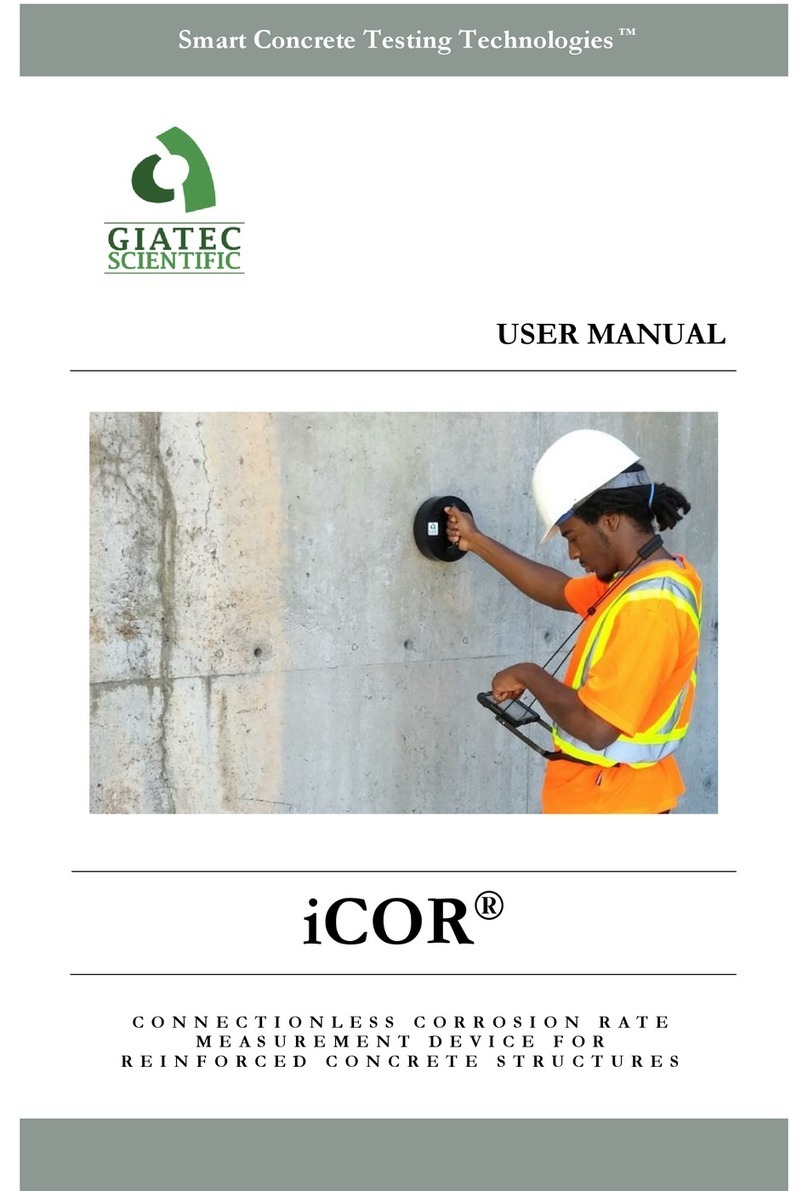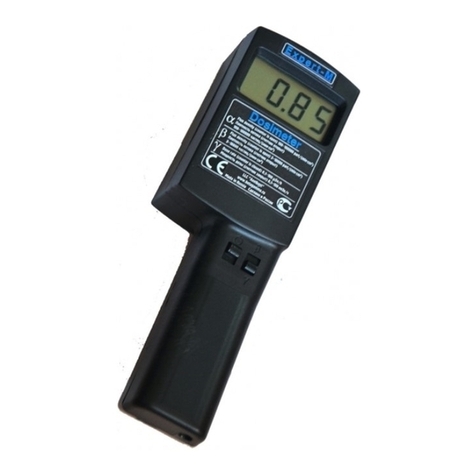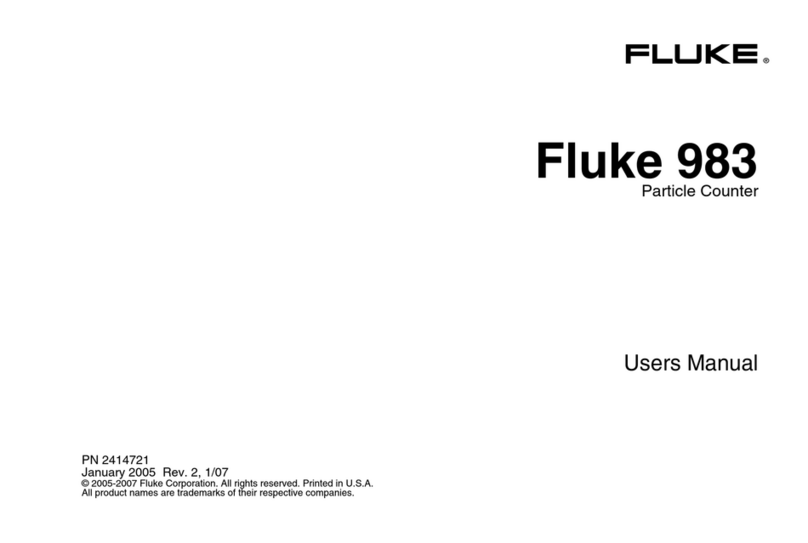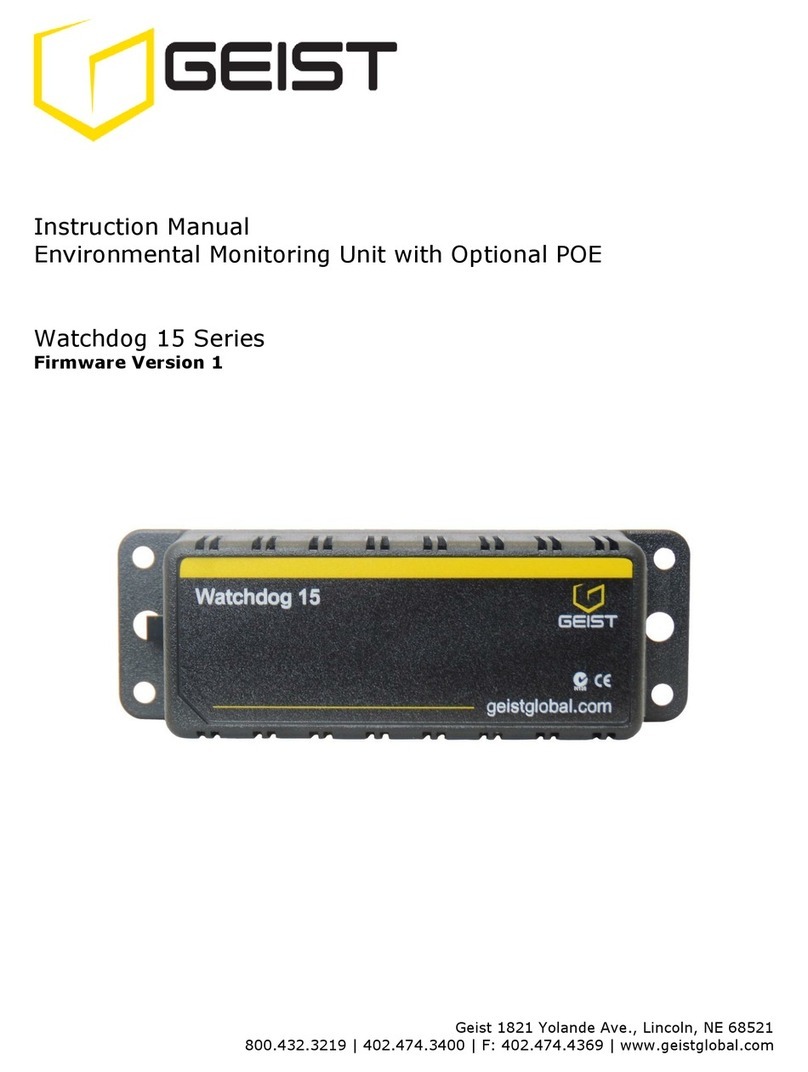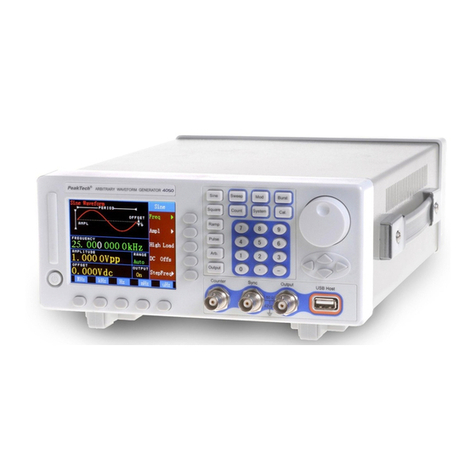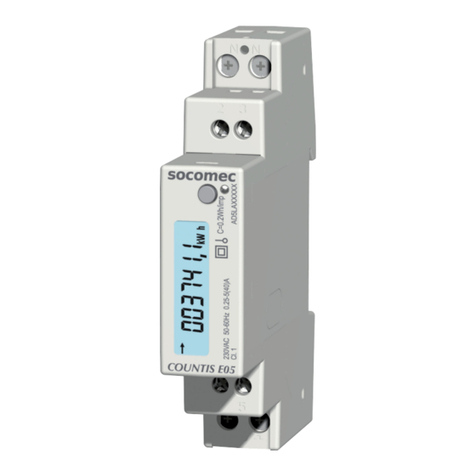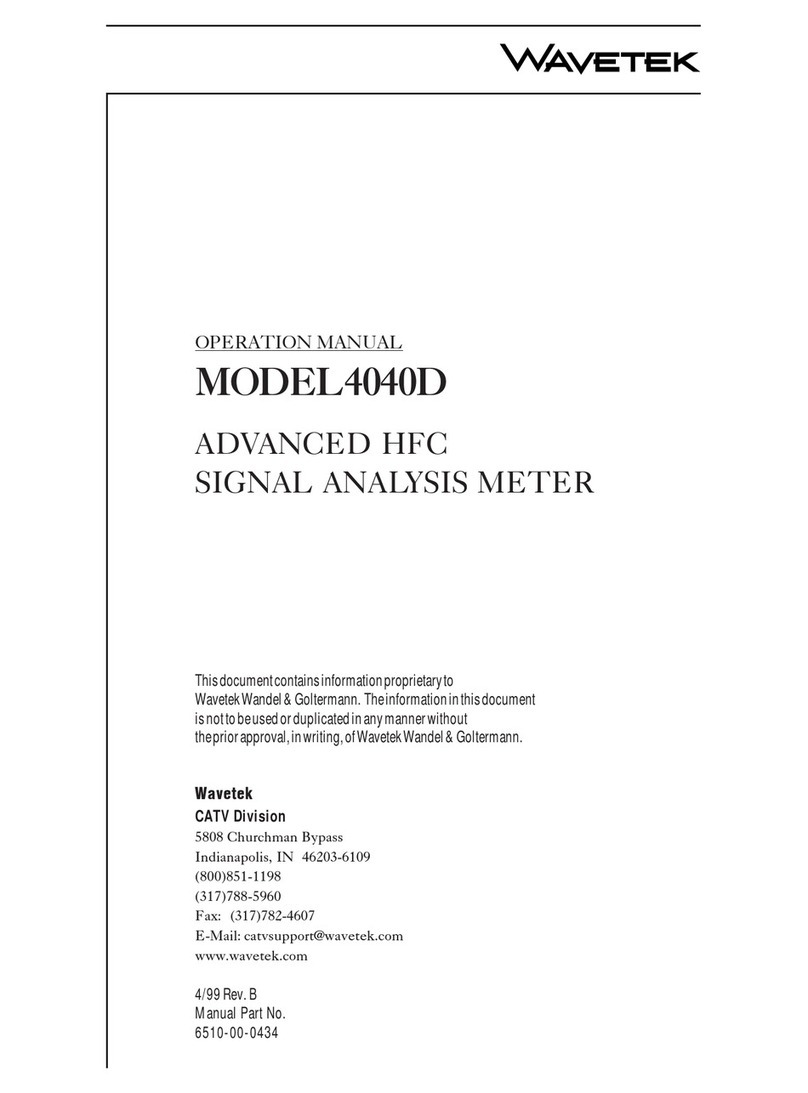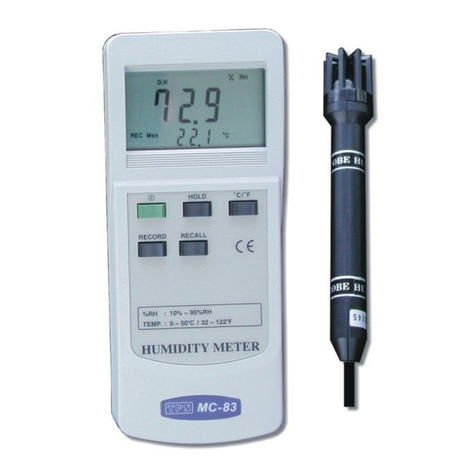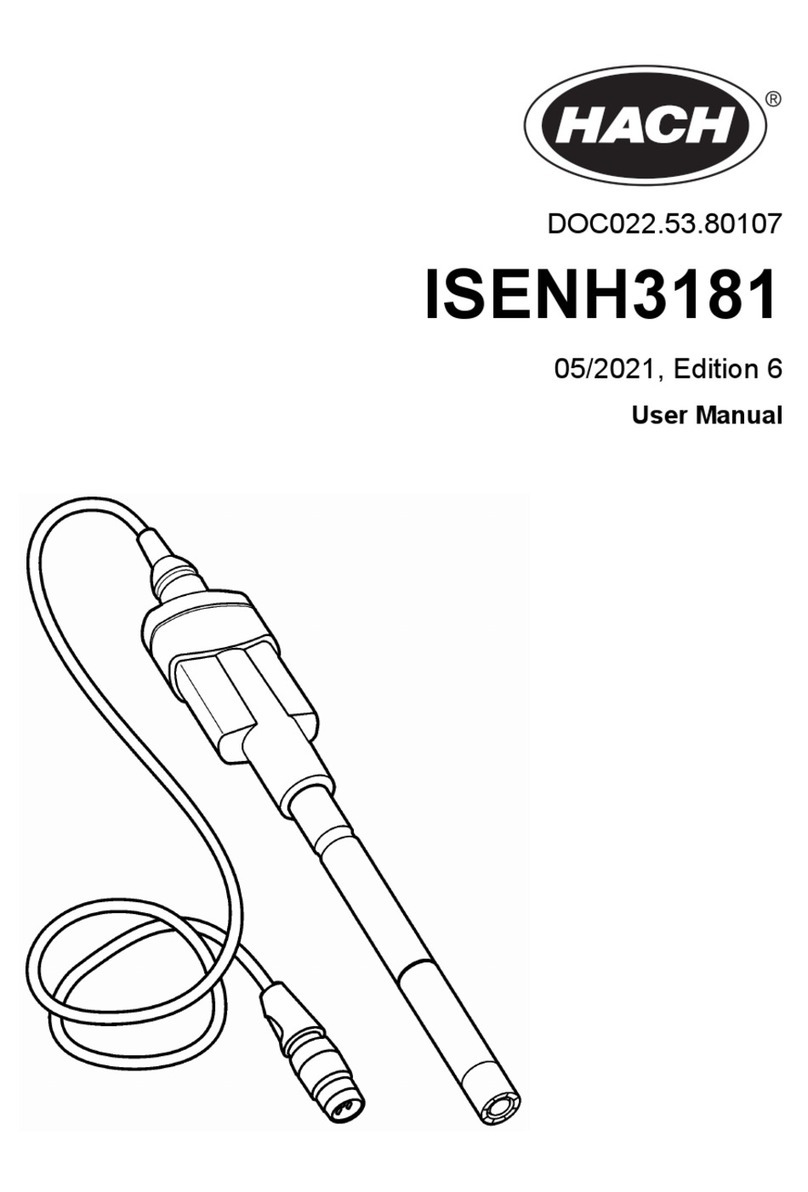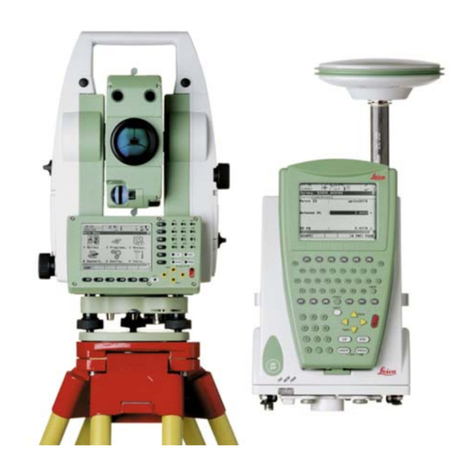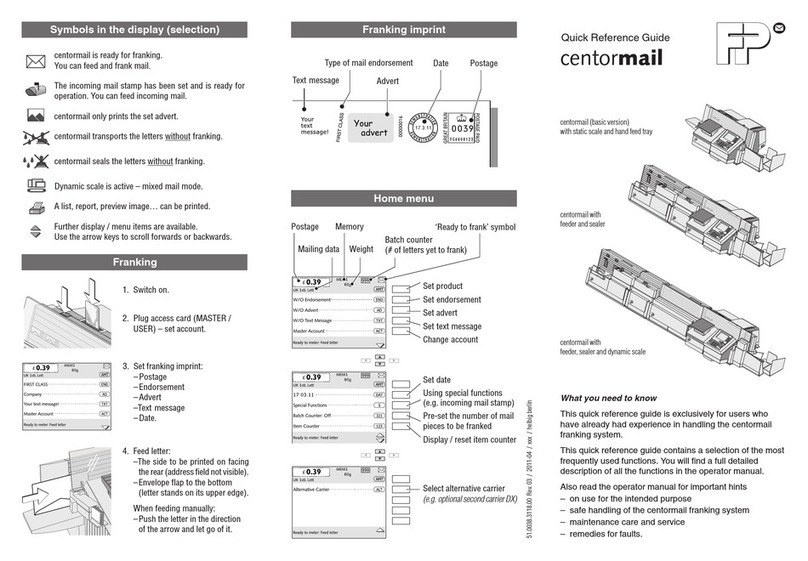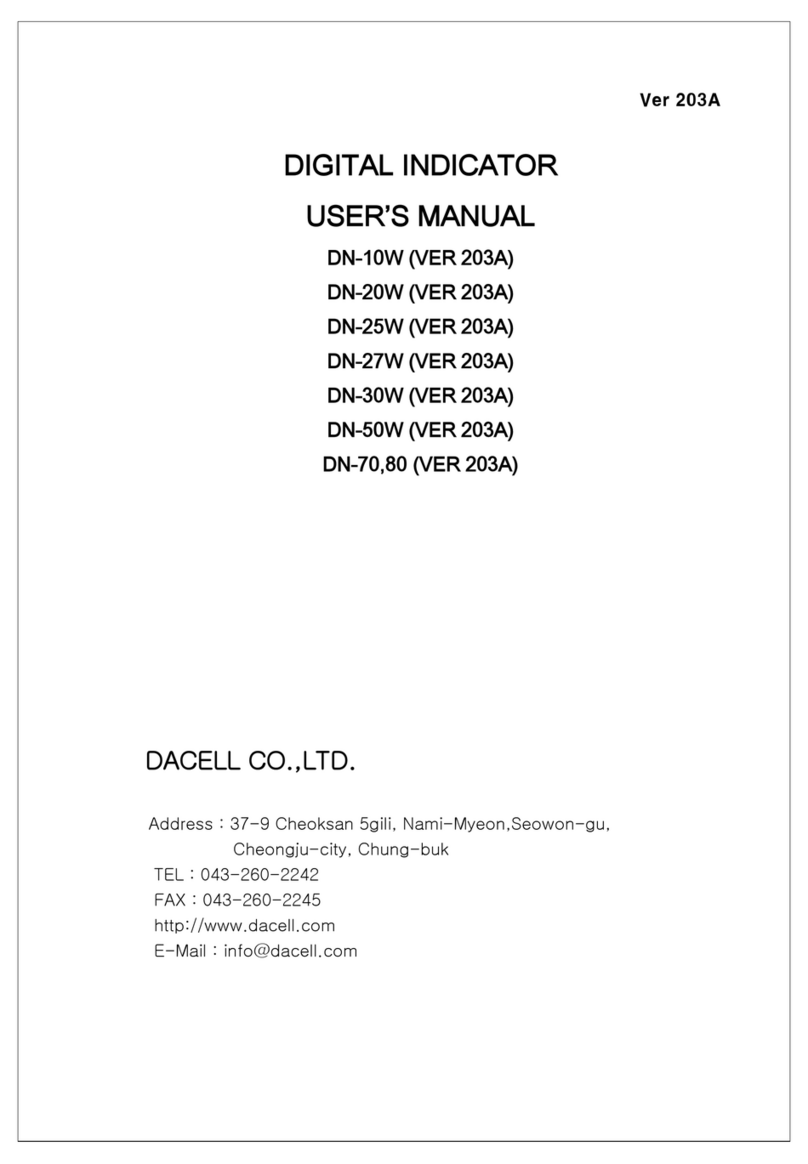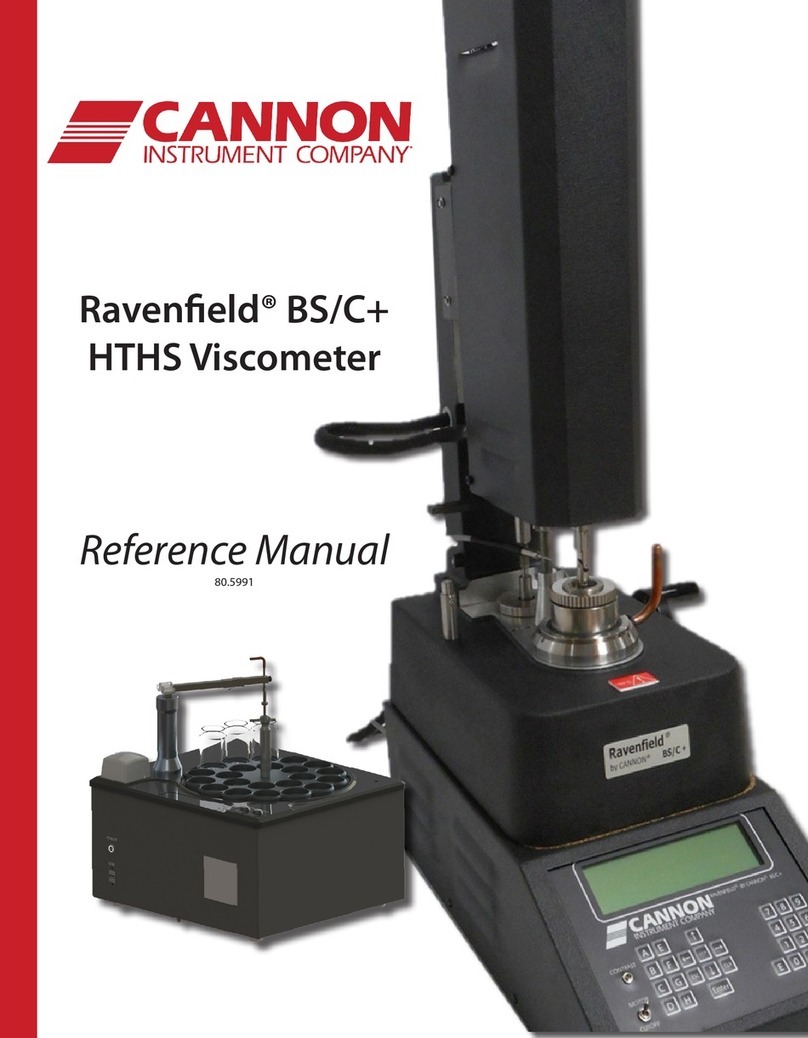Giatec Scientific XCell User manual

XCell™ User Manual
USER MANUAL
XCell™
H A L F - C E L L P O T E N T I A L M E A S U R E M E N T
Smart Concrete Testing Technologies™


XCell™User Manual
©Giatec Scientific Inc.


XCell™User Manual
©Giatec Scientific Inc. i
TABLE OF CONTENTS
TABLE OF CONTENTS .............................................................................. I
PACKAGE CONTENTS ............................................................................ III
WARRANTY ................................................................................................. V
SAFETY INSTRUCTIONS........................................................................... 1
SAFETY SYMBOLS ..............................................................................................................1
GENERAL GUIDELINES ...................................................................................................1
DEVICE HANDLING .........................................................................................................1
OPERATION .......................................................................................................................2
CLEANING THE INSTRUMENT........................................................................................2
OPERATION ENVIRONMENT ..........................................................................................2
STORAGE ENVIRONMENT...............................................................................................3
INTRODUCTION TO GIATEC XCELL™.................................................. 4
CORROSION OF STEEL IN CONCRETE..........................................................................4
HALF-CELL POTENTIAL MEASUREMENT.....................................................................5
APPLICATION.....................................................................................................................5
COMPLICATIONS ...............................................................................................................6
LIMITATIONS .....................................................................................................................7
GENERAL INSTRUCTIONS.......................................................................8
XCELL™OPERATING INSTRUCTIONS ..................................................9
TEST PROBE.......................................................................................................................9
PROBE SETUP.....................................................................................................................9
CHARGING THE PROBE.................................................................................................10
STORING THE PROBE.....................................................................................................10
DATA RECORDING UNIT SETUP ...........................................................11
LITE/ESSENTIAL PACKAGE..........................................................................................11
ENHANCED/COMPREHENSIVE PACKAGE.................................................................11
FRESH INSTALLATION....................................................................................................11
ACCESSORIES ...................................................................................................................12
XCELL™APP –LITE &ESSENTIAL PACKAGE...........................................................12
XCELL™APP –ENHANCED &COMPREHENSIVE PACKAGES ................................19
DATA PROCESS AND CONTOUR PLOTS ..................................................................30
DATA EXPORTING AND SHARING .........................................................................33
VERIFICATION ......................................................................................... 35
MAINTENANCE........................................................................................ 38
SERVICE ............................................................................................................................38
REPLACEMENTS...............................................................................................................38

XCell™User Manual
©Giatec Scientific Inc. ii
XCELL™TECHNICAL SPECIFICATIONS ............................................. 39
GENERAL..........................................................................................................................39
OPERATING CONDITIONS.............................................................................................39
REFERENCES............................................................................................ 40
TERMS AND CONDITIONS OF SALE ...................................................... I
("SALE AGREEMENT") ............................................................................. I
EXHIBIT A: END USER SOFTWARE LICENSE .................................. VII

XCell™User Manual
©Giatec Scientific Inc. iii
PACKAGE CONTENTS
Part
Qty
Photo
Package
Lite
Essential
Enhanced
Comprehensive
XCell™Measuring Probe
1X
✓
✓
✓
✓
Alligator Test Clips
1X
✓
✓
✓
✓
Measurement Cable
1X
✓
✓
✓
✓
Charging Cable
1X
✓
✓
✓
✓
USB Cable
1X
-
-
✓
✓
Contact Sponge
3X
-
✓
✓
✓
Electrode Storage Solution
1X
-
✓
✓
✓

XCell™User Manual
©Giatec Scientific Inc. iv
Carrying Case
1X
-
✓
✓
✓
Data Recording App
(Smartphone version)
-
✓
✓
-
-
Tablet with hands-free
carrying support
1X
-
-
✓
✓
Tablet Charger
1X
-
✓
✓
✓
Data Recording and
Analysis Application
(Tablet version)
-
-
-
✓
✓
Extension Arm
1X
-
✓
✓
Verification Kit
1X
-
-
-
✓
Cable Reel (30 m)
1X
-
-
-
✓
* Please note that the images above are for illustration purpose only and might
not be in scale.

XCell™User Manual
©Giatec Scientific Inc. v
WARRANTY
LIMITED WARRANTIES
Giatec warrants the Product against defects in materials and workmanship
under normal use (the “Warranty”) for a period of 12 months from the
Delivery Date (the “Warranty Period”), on the condition that the Product
has been completely paid for. Unless as otherwise mandated by local law,
the Warranty Period does not restart if Customer receives a replacement
appliance and/or replacement Software. This Warranty does not apply: (a)
to consumable parts, such as batteries and cables unless damage has
occurred due to a defect in materials or workmanship; (b) to cosmetic
damage, including but not limited to scratches, dents and broken plastic on
ports; (c) to damage caused by accident, abuse, misuse, neglect or failure to
properly maintain (to include but not limited to water damage and/or
condensation or improper temperatures during storage), or improper
installation; (d) to damage caused by electrical disturbances or acts of God,
to include but not limited to civil disturbance, war, flood, fire, rodents or
insects; (e) where manufacturer’s serial numbers and security labels have
been removed from the Product; and (f) to damage caused during shipment
(due to Customer’s improper packaging) from Customer to Giatec in the
case of Product returns for repair.
Giatec disclaims all other warranties, express or implied, including without
limitation implied warranties of merchantability, fitness for a particular
purpose, or against hidden or latent defects. Giatec’s responsibility for
warranty claims is limited to repair or replacement. Giatec reserves the right
to modify this Warranty at any time, at its sole discretion, and with notice to
Customer.
Giatec does not warrant that the operation of the Product will be
uninterrupted or error-free. Giatec is not responsible for damage arising
from failure to follow instructions relating to the Product’s use. This
Warranty is voided immediately if repair, modification (to include upgrades,
expansions or usage or addition of non-manufacturer parts or accessories),
alteration or other service is attempted other than by Giatec. In this regard,
the integrity of the appliance casing (aka the box) should not be violated for
any reason, unless expressly authorized by Giatec in writing.

XCell™User Manual
©Giatec Scientific Inc. vi
THE WARRANTY SET FORTH IS EXCLUSIVE AND NO OTHER
WARRANTY, WHETHER WRITTEN OR ORAL, IS EXPRESSED OR
IMPLIED. GIATEC SCIENTIFIC INC. SPECIFICALLY DISCLAIMS
THE IMPLIED WARRANTIES OF MERCHANTABILITY AND
FITNESS FOR A PARTICULAR PURPOSE.
*Please refer to the complete Terms and Conditions of Giatec’s products for more details.
*The information contained in this document is subject to change without notice.

XCell™User Manual
©Giatec Scientific Inc. 1
SAFETY INSTRUCTIONS
This chapter contains important safety instructions that the user must
follow for operating and storage of Giatec XCell™. Read the following
safety information before any operation to ensure your safety and to keep
the instrument in good condition. Keep this user manual in a safe place for
future reference.
SAFETY SYMBOLS
In order to ensure the safety of the operator, and increasing the service life
of the instruments, pay attention to safety precautions described in this
manual. These messages are indicated by a symbol throughout this user
manual.
WARNING: Identifies conditions or practices that could result
in injury or loss of life.
CAUTION: Identifies conditions or practices that could result
in damage to Giatec XCell™or to other properties.
ATTENTION: Refer to the User Manual
GENERAL GUIDELINES
1. Always follow basic safety precautions when using this product to
reduce risk of injury from fire or electric shock.
2. Read and understand all instructions in the documentation that comes
with Giatec XCell™.
3. Observe all warnings and instructions marked on the product.
DEVICE HANDLING
CAUTION
Giatec XCell™is a non-destructive testing device. The electronic parts and
electrochemical cell are sensitive components. Please handle them with
care.
•Do not place any heavy object on the XCell™probe or the tablet.
•Avoid severe impact or rough handling that leads to damaging
XCell™or the tablet.
•Do not disassemble XCell™.

XCell™User Manual
©Giatec Scientific Inc. 2
•Store the product in a protected location (e.g. carrying case) where
no one can step on or trip over the connection and USB-charging
cables, and in a location where these cables cannot be damaged.
OPERATION
WARNING
•Device Input: USB only
•Only use the provided USB charging cable for XCell™, and the
provided power adapter for the tablet (the latter is applied to the
enhanced and comprehensive packages).
•Do not perform measurement at circuits directly connected to
Mains (Live circuit).
•Place the instrument in the place where the chance of spilling
liquids on the device is negligible.
•The device should be charged at least once every 4 months.
CLEANING THE INSTRUMENT
ATTENTION
•Disconnect the probe from the cable after testing.
•Do not use chemicals or cleaners containing harsh products such
as benzene, toluene, xylene, and acetone.
•Do not submerge the measuring probe
OPERATION ENVIRONMENT
ATTENTION
•Location: Indoor/outdoor
•Relative Humidity: 20% to 90%
•Temperature: 0°C to 45°C
•Avoid direct sunlight
•Do not submerge the device

XCell™User Manual
©Giatec Scientific Inc. 3
STORAGE ENVIRONMENT
ATTENTION
•Location: Indoor
•Relative Humidity: 5% to 90%
•Temperature: 0°C to 70°C

XCell™User Manual
©Giatec Scientific Inc. 4
INTRODU CTION TO GIATEC XCell™
Giatec XCell™is a revolutionary test device for measuring the corrosion
activity of the reinforcing steel in concrete. The test procedure has been
standardized by different standards including:
•ASTM C876
•RILEM TC 154
•UNI 10174
•DGZfP B3
•SIA 2006
•BS 1881, Part 201
The device is capable of accurately estimating the electrochemical corrosion
potential of uncoated reinforcing steel in field and laboratory conditions.
XCell™offers an advanced solution for the traditional half-cell potential
measurement. The efficiency, accuracy and speed of the half-cell corrosion
mapping have substantially increased in Giatec XCell™by combining the
wireless electrode technology with an interactive mobile app. This new
device brings enhanced portability, accurate data measurement and easy
data management. Moreover, the tablet app offers a powerful post-
processing tool and an easy way to share the results with other team
members. In this regard, XCell™can significantly save time, human
resources and cost.
CORROSION OF STEEL IN CONCRETE
The corrosion of steel reinforcement inside concrete can be described as an
electrochemical reaction. In this reaction electrons migrate from the anodic
zone to the cathodic zone, releasing ferrous ions at the anode and
hydroxide ions at the cathode.
Figure 1. Corrosion of steel in concrete
2Fe(OH)2
Steel bar
Concrete
4e-
O2+2H2O +4e-→4OH-
Cathode
2Fe2+
2Fe→2Fe2+ + 4e-
Anode
4OH-

XCell™User Manual
©Giatec Scientific Inc. 5
This will eventually lead to a potential difference between the anodic and
cathodic areas at the surface of the steel reinforcement.
HALF-CELL POTENTIAL MEASUREMENT
The purpose of the half-cell potential measurement is to measure the
potentials on the surface of concrete in order to predict the potential field.
The potential measurement is used to predict the state of rebar corrosion in
concrete. This technique allows for the plotting of a potential contour map
of the concrete surface, which can be used to identify the corroding areas
and estimate the probability of corrosion (Elsener and Bohni, 1995).
In the half-cell potential measurement, a reference electrode is used to
measure the potential values of a specific location on the surface of the
concrete with respect to an arbitrary reference point on the reinforcement
mesh. The traditional half-cell potential measurement is schematically
illustrated below.
Figure 2. Half-cell potential measurement
APPLICATION
XCell™can be used in either field or laboratory applications to measure the
corrosion potential of steel reinforcement in concrete structures. This
technique can be utilized for various applications such as:
•Estimation of corrosion potential of uncoated reinforcing steel
•Determine corrosion activity of steel rebar
The measured corrosion potential values are indicative of corrosion
probability as presented in Table 1.

XCell™User Manual
©Giatec Scientific Inc. 6
Table 1- Relationship between the potential values and corrosion probability
(adapted from ASTM C876)
Measured Potential (mV/CSE*)
Probability of
Steel Corrosion Activity
> -200
Less than 10%
-200 to -350
Uncertain
< -350
More than 90%
*Note 1: CSE= Copper Sulfate Electrode
It is noted that half-cell potential measurements can also be affected by
testing condition. RILEM TC-154 (2003) reported typical range for half-cell
potential measurements in different conditions (see Table 2).
Table 2- Typical ranges of half-cell potentials of rebar in concrete (adapted
from RILEM TC-154, 2003)
Condition
Potential values (mV/CSE*)
Humid, chloride free concrete
-200
to
+100
Wet, chloride contaminated concrete
-600
to
-400
Water saturated concrete without oxygen
-1000
to
-900
Humid, carbonated concrete
-400
to
+100
Dry, carbonated concrete
0
to
+200
Dry concrete
0
to
+200
*Note 1: CSE= Copper Sulfate Electrode
COMPLICATIONS
While half-cell potential measurement is a straightforward procedure, the
application of this technique has several complications as ambient condition
can influence measurements. These complications can lead to
misinterpretation of collected data. The most important parameters that can
influence measurements are briefly described below:
Temperature: The variation in ambient temperature can affect half-cell
potential measurements. The measured values should be corrected for the
temperature effects (CEFRACOR, 2007). It is noted that performing the
test below freezing point is not recommended.

XCell™User Manual
©Giatec Scientific Inc. 7
Moisture: Surface moisture has a significant effect on the measured values.
Since performing the test may take quite a long time, the change in
moisture content of concrete surface can affect the consistency of
measurements (RILEM TC-154, 2003). As a rule of thumb, the drier the
concrete is, the more positive values will be obtained performing the test.
Cover Thickness: A lower concrete cover leads to more negative values in
half-cell potential measurements. There is a little research on the effect of
cover thickness on the potential measurements; hence there is no
straightforward correction procedure (SHRP2, 2013). Therefore, it is
recommended to verify the cover thickness for the area being tested in
order to avoid misinterpretation of the collected data.
Concrete Properties: Concrete properties such as density, permeability,
porosity, and electrical resistivity are factors that can affect the half-cell
potential measurements. A dense concrete cover reduces the permeability
of chloride and oxygen. This will reduce the oxygen concentration. As a
result, the half-cell potential values tend to be more negative (Gu and
Beaudoin, 1998).
Availability of Oxygen: The availability of oxygen gas at the surface of
steel rebar can affect the half-cell potential readings. Generally, lower
concentration of oxygen at rebar level leads to more negative values on the
surface (Gu and Beaudoin 1998, Elsener 2003), which can be mistaken for
an active corrosion zone.
LIMITATIONS
Half-cell potential measurement is a very useful technique in studying the
corrosion of existing structures (or elements). However, the test does not
provide any information on the kinetics of corrosion (i.e. corrosion rate of
steel reinforcement). It is always recommended to interpret Half-cell
potential measurements with supplementary data from other tests (i.e. cover
thickness measurement, electrical resistivity, and chloride profile).
The presence of large cracks and delaminations can affect half-cell potential
readings. In case of pre-stressed steel tendons, the test will not provide any
useful information if the tendons are placed in protective tubes. This test is
not applicable to concrete structures with epoxy-coated or galvanized steel
rebar.

XCell™User Manual
©Giatec Scientific Inc. 8
GENERAL INSTRUCTIONS
This section provides general recommendations for a successful half-cell
potential measurement.
Charging the Probe and Data Recording Unit: It is strongly
recommended to charge the measuring probe and data recording unit
(smartphone in Essential package, and tablet in Enhanced and
Comprehensive packages). Refer to page 10 of this user manual to learn
how to charge the probe.
Before performing a half-cell potential measurement, the operator may
need to prepare the surface of concrete element.
Testing Grid: In order to facilitate the half-cell potential test, it is
recommended to mark out the test grid on the surface of the concrete. The
user is encouraged to perform the test in a systematic order to efficiently
keep track of recordings.
Pre-moistening the surface: If the surface of concrete element is too dry,
there is a chance that it affects the measurements. In order to avoid this
problem, it is recommended to moisten the surface of the concrete element
approximately 15-20 minutes before performing the readings.
Consider the effect of coatings: The presence of isolating coatings (i.e.
sealing epoxy, asphalt layer) on the surface of concrete will make it
impossible to perform half-cell potential measurements unless a hole is
drilled through this layer. Once the concrete has been reached, the hole
needs to be filled with a conductive solution. However, it is still possible to
perform the test for thin dispersion coatings (often used in car parking
spaces, ceilings). The measurements are often associated with a shift in the
potentials.

XCell™User Manual
©Giatec Scientific Inc. 9
XCell™OPERATING INSTRUCTIONS
Giatec XCell™has two main components:
1- Test Probe
2- Data Recording Unit
TEST PROBE
Giatec XCell™test probe benefits from an advanced maintenance-free
reference electrode that measures the corrosion potential. Together with
a potentiometer, a temperature sensor, and wireless technology, the
probe is capable of measuring and correcting the potential values on the
surface of concrete with respect to the reference point and transmitting
the measurements to the Data Recording Unit.
There is a fixed electrochemical potential difference between the
Ag/AgCl electrode and the Cu/CuSO4electrode. The XCell™data
recording app accounts for this difference and presents the results in
mV/CSE (i.e., Cu/CuSO4Electrode, CSE) as per ASTM C876.
The reference electrode used in the measuring probe has a temperature
coefficient of -0.65 mV per °C for the temperature range between 0 to 70
°C. If the temperature compensation mode is selected in the Giatec XCell™
app, the results are modified and presented at 25°C.
The Giatec XCell™is equipped with a maintenance-free electrode.
PROBE SETUP
First, remove the probe cap and wet the contact sponge with water. To turn
on the probe, connect the test cable to the probe: gently push the cable end
shaft toward the probe socket, until it is locked (as shown below).
Figure 3. Probe connection

XCell™User Manual
©Giatec Scientific Inc. 10
The Giatec XCell™is equipped with a maintenance-free electrode.
To turn on the probe, connect the test cable to the end of the probe.
To turn off the probe, disconnect the test cable from the probe. This
will increase the battery life.
CHARGING THE PROBE
The probe is powered by a rechargeable battery embedded inside. In
order to charge the probe, connect the charging cable to the probe as
shown below. Connect the other end of charging cable (USB end) to any
powered USB outlet (i.e.; computer USB port, USB chargers, etc.).
Figure 4. Charging probe
In order to check the battery level after charging, connect the probe to
the data recording app. While the battery is charging, a charging battery
icon will appear on the screen. When the probe is completely charged, a
full battery icon will appear on the screen. When this icon appears on
the screen, remove the charging cable from the probe.
The device should be charged at least once every 4 months.
STORING THE PROBE
It is strongly recommended to turn off the probe after you have finished
the test. To turn off the probe, disconnect the test cable from the end of
the probe. Push the small button on the socket, and gently pull out the
cable.
The sponge on the tip of the probe should be completely wetted with
the storage solution and the probe cap should be placed and tightened
on the probe head before storing the probe. This practice will
significantly increase the lifetime of the electrode.
Table of contents
Other Giatec Scientific Measuring Instrument manuals
